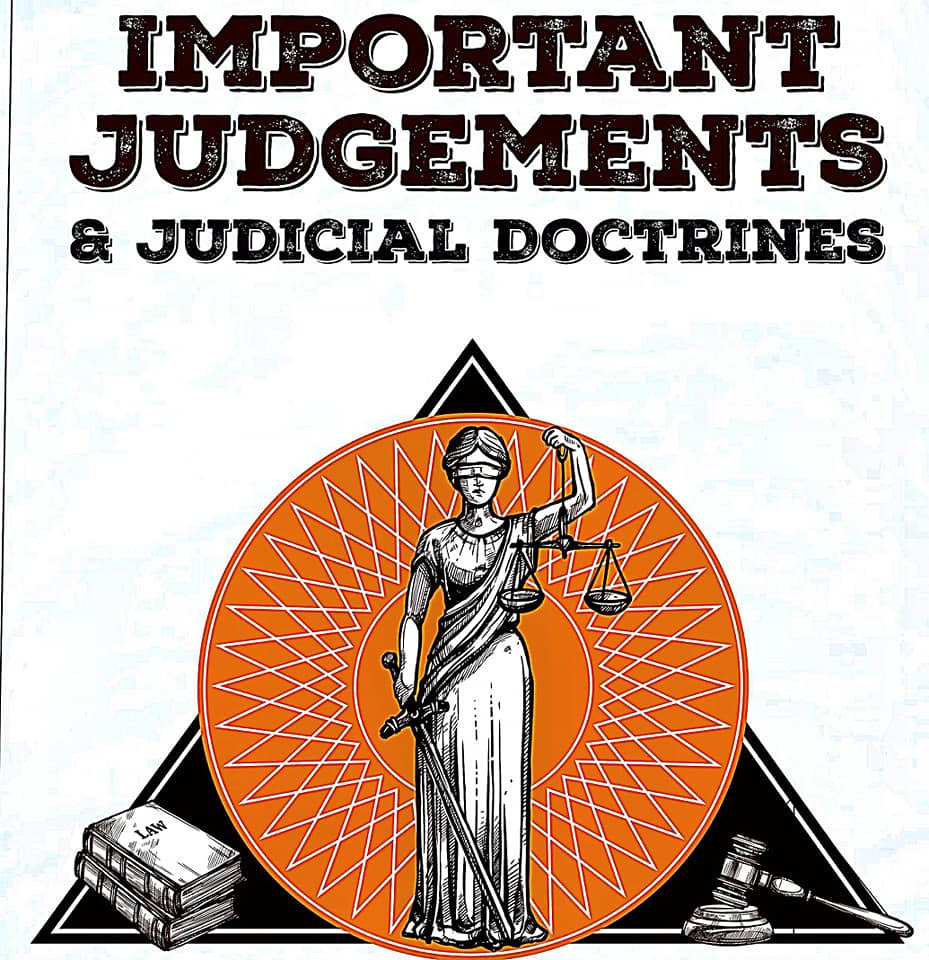Indian Constitution lays the foundation of modern India – laying down the political, social and economic structure of our nation. Enacted in 1949 and commenced on January 26, 1950, it is not just another paper document. It is an emblem of democratic belief and hope – and rule by law.
For BA LLB students, it is essential to know how the Indian Constitutions came into being and evolved to get an about its historical background, basis, and reforms that have led to India’s present legal and political structure. At the undergraduate level, you need to do a deep dive into constitutional amendments, judicial interpretations, and the official journey of the living document as it adapts to socio-legal changes, draws from other global constitutions, and responds to India-specific challenges.
The study of the Constitution is a vital ingredient for understanding the evolution and dynamics between different communities in India and why it is called ‘A Living Document’.
The Historical Context of the Indian Constitution
Pre-Independence Constitutional Developments
The journey of Indian laws began long before India gained independence. The British colonial rule introduced several legislative frameworks that laid the groundwork for the Indian legal system. Key among these were the Government of India Acts of 1858, 1919, and 1935.
These acts gradually introduced limited self-governance, though they were primarily designed to serve British interests.
Role of the Constituent Assembly
The formation of the Constituent Assembly in 1946 marked a significant milestone in the history of the Indian Constitution. Comprising visionary leaders like Dr B.R. Ambedkar and Jawaharlal Nehru, the Assembly was tasked with drafting a Constitution that would reflect the aspirations of a newly independent nation.
For BA LLB students, understanding the contributions of these key figures is essential to appreciating the foundational principles of India’s legal system.
Key Milestones in the Evolution of the Indian Constitution

The Drafting and Adoption of the Constitution (1947-1950)
The Indian Constitution was meticulously drafted by a committee led by Dr B.R. Ambedkar, often referred to as the “Father of the Constitution.” The process culminated in the adoption of the Constitution on January 26, 1950, marking the birth of the Republic of India.
This period is crucial for BA LLB students as it highlights the careful consideration and debate that went into creating a document that would govern a diverse and populous nation.
Landmark Amendments and Their Impact
The evolution of Indian laws is marked by several constitutional amendments that have significantly impacted their interpretation and application:
- The First Amendment (1951) addressed land reforms and imposed reasonable restrictions on the freedom of speech.
- The 42nd Amendment (1976) introduced the terms “Secular” and “Socialist” into the Preamble and expanded fundamental duties, reflecting the socio-political context of the time.
- The 44th Amendment (1978) was crucial in safeguarding against the misuse of emergency powers, a response to the experiences of the Emergency period.
For BA LLB students, studying these constitutional amendments is vital for understanding how the Constitution has been adapted to meet changing needs and challenges.
Judicial Interpretations and Doctrines

Judicial interpretations have played a pivotal role in shaping the Indian Constitution. The Basic Structure Doctrine, established in the Kesavananda Bharati case (1973), is one of the most significant judicial doctrines. It ensures that certain fundamental features of the Constitution cannot be altered by amendments, thus preserving the core values of the Constitution.
The evolution of Fundamental Rights and Directive Principles of State Policy through judicial interpretations is another key area of study for BA LLB students involved in constitutional studies.
Modern Developments and Challenges
Recent Amendments and Their Relevance
The Indian Constitution continues to evolve through recent constitutional amendments. For example:
- The 101st Amendment (2016) was one of the most important economic reforms which came into effect with the introduction of Goods and Services Tax (GST) and created a unified tax structure.
- The 103rd Amendment (2019) made reservations for Economically Weaker Sections possible and is the oft-repeated example of how the Constitution could accommodate itself to modern-day social challenges.
Emerging Constitutional Issues
Conversely, debates around the uniform civil code, privacy as a fundamental right, and where to draw the line between state power and individual rights are new winds in this old warning bell. These concerns have driven home the point that the Constitution is a living document; one might even say, on steroids, and always in need of judicial interpretation to accommodate modern-day exigencies.
BA LLB students must understand these topics to really grasp the relevance of the Constitution in modern governance and law.
The Role of the Constitution in Contemporary India

The Constitution as a Living Document
Accordingly, the Indian Constitution is frequently described as a living document in that it can be adapted to new circumstances either through formal amendments or judicial review. This malleability allows the Constitution to adjust itself according to changes in the socio-political environment while keeping its essentials untouched. It is an important point of the Constitution and can be key in Constitutional Studies as it shows why governance structures need to be flexible.
Influence on Modern Law and Governance
Our Constitution significantly influences modern legal practices, governance, and public policy. The judiciary plays a key role in upholding constitutional values, interpreting laws in the context of contemporary society, and ensuring that governance aligns with constitutional principles.
If you aspire to contribute to the legal and political landscape of India one day, understanding this influence is essential.
Implications for BA LLB Students
Academic Importance
A deep understanding of the Indian Constitution and its evolution is crucial for a law student who wants academic success. This knowledge is directly relevant in exams, moot courts, and legal debates, where a strong grasp of constitutional principles and judicial interpretations is often required.
Professional Significance
In the professional realm, the insights gained from studying the Constitution well have practical applications in legal practice, public service, and policymaking. This study enhances analytical and critical thinking skills, which are essential for interpreting and applying constitutional law in real-world scenarios.
Conclusion
The evolution of the Indian Constitution is marked by significant milestones, including its drafting, key amendments, and influential judicial doctrines. These breakthroughs are essential for understanding how the Constitution has adapted to the needs of a diverse and evolving nation.
We advise our BA LLB students to use this as an opportunity to engage with the foundational principles of Indian law and governance. As the Constitution continues to evolve, its relevance to future careers in law remains ever-significant.





